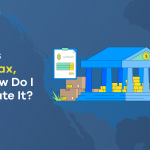
The recent Supreme Court ruling in South Dakota v. Wayfair Inc. is poised to complicate the way online retailers, big and small, do business. How will your business respond?
Until now, the law of the land has been that online retailers could avoid charging sales tax to customers in states where the seller did not have a physical presence or nexus.
For instance, if your business was located in New York and you were selling a product to a customer in Marietta, Oklahoma, you could forgo adding the combined 10% state and local sales taxes to the purchase price.
Unsurprisingly, customers in high-tax states have shown increased motivation to order from third-party marketplaces to avoid paying the additional sales taxes on their purchases (despite oft-ignored state laws that require customers to report and pay use taxes after the fact).
In the case of Amazon, over 50% of all sales are from third-party sellers.
These sellers have been able to take advantage of the ‘physical presence’ loophole as a way to undercut the local brick-and-mortar retailers in the states that collect sales taxes.
South Dakota v. Wayfair overturns the physical presence precedent (set by 1992’s Quill Corp v. North Dakota) and strips away these online interstate sales tax benefits enjoyed by both sellers and buyers.
All online sellers are now expected to collect the appropriate sales tax on every transaction.
This raises some important questions and logistical hurdles that all e-commerce businesses must be concerned with.
How Are the States Going to Respond?
Supreme Court rulings are not like legislative actions that can take months or even years to roll out. When the court reaches a decision, it’s binding federal law.

This is a special case where the online sales tax issue has now been tossed into the hands of the individual states.
It is up to them to enforce the court’s ruling and begin collecting on this new avenue for sales tax revenue if and how they choose to do so.
In most cases, this will mean drafting and passing legislation to adjust state tax codes. The decision is technically federal law now, but it may take some time for states to put it into action.
Some states will fast-track this process by borrowing the framework of the existing South Dakota law (which is complicated by sales volume and transaction value thresholds), while other states may take their own approaches.
Ultimately, it is likely many states will take a cue from states like Pennsylvania and Washington that already have laws on the books holding the marketplaces (like Amazon and Walmart) accountable for the sales tax collection on their platforms instead of chasing after the individual third-party sellers.
After all, there’s more to be gained by regulating the whole pond rather than trying to wrangle each of the individual fish swimming in it—especially when those fish account for over half of all e-commerce sales.
One thing is for sure, states will certainly be weighing how much they want to poke the bear that is interstate commerce law. This will not be the last time the sales tax issue has its day in court.
Regardless, online sellers will need to stay abreast of these developments in every state they ship to.
What Does South Dakota v. Wayfair Mean for Individual Sellers?
Headaches.
The South Dakota v. Wayfair decision means that sellers must charge, collect, and document the proper amount of sales tax for each state and jurisdiction they sell to.
What’s more, sellers will need to file sales tax returns with each state that they do business with each year.
There is hope that states will take steps to simplify the process, as Pennsylvania and Washington already have, but there will certainly be states that do not.
Many states already have complicated sales tax structures that differentiate between types of products, where the sale originates, and even what specific county or city the customer lives in.
This isn’t just a case of sellers having to become familiar with a few dozen state sales tax rates. There are literally thousands of possible combinations of state and local sales tax considerations to account for.
I won’t sugar-coat it—interstate sales are going to be more complicated than ever before.
What Impact Will South Dakota v. Wayfair Have On Online Sales?
For customers whose primary reason for shopping online is dodging sales tax, the South Dakota v. Wayfair ruling all but eliminates their motivation for clicking the ‘Check Out’ button.
Third-party sellers will certainly feel the impact on their bottom lines. That said, one of the major selling points of online retail still remains untouched—convenience.
If your e-commerce operation offers a reliable and streamlined purchasing experience for customers, this is a storm you will be able to weather. Just make sure you have your bookkeeping in order!
Are There Any Tools or Solutions That Help Sellers Deal With This Issue?
Yes! The Sellercloud platform has built-in integration with TaxJar to help with this very type of issue.
The TaxJar service has its own direct integration features with some of the most widely used online marketplaces (Amazon, eBay, Walmart).
However, when combined with the Sellercloud platform and its wide range of seller channel integrations, TaxJar’s value increases exponentially.
With a linked TaxJar account, Sellercloud ensures that each of your orders includes the exact, up-to-date sales tax amounts for each state and domestic locale you ship to. Come tax time, you can even file your sales tax returns automatically in most states.
This means that while new sales tax rules will certainly affect your online business, they don’t have to place undue burdens on your time or sanity.
Want to know more about how Sellercloud can help navigate your business through these changes (and whatever other policy changes may come down the pike)?
Request a live demo to see how our software can streamline your online sales and ensure you are always optimizing both your profits and compliance.
How Are Sellers Reacting Now?
This may be the most interesting and important trend to watch.
So far, most sellers are doing… well… nothing.
In the short term, this makes sense. Being one of the first e-commerce businesses in your marketplace to comply with the new sales tax rules (most of which aren’t even formalized yet) puts you at a competitive disadvantage.

When customers are given a choice of two comparable products, price is often the determining factor. Your timely addition of a sales tax charge won’t do you any favors.
Let’s face it: customers aren’t lining up to reward your sense of civic duty. Plain and simple, being one of the first sellers in your market to tack on additional sales tax means you’ll probably lose sales.
Conversely, playing ‘wait and see’ as the states shake out their responses to South Dakota v. Wayfair is a more measured and practical approach.
While there is certainly a risk of a state audit exposing your failure to collect the appropriate sales taxes, the potential hit to your sales is far riskier at this stage in the game.
If past practice is any indication, online sales tax enforcement has traditionally been quite lax.
For example, even before this most recent ruling, sellers who participated in the Fulfillment By Amazon (FBA) service technically had a physical presence in every state with an Amazon warehouse.
That means they must collect sales tax on all qualifying transactions involving customers in those states.
The reality is that hardly any FBA customers took this compliance very seriously or received any punitive action for their neglect.
That’s not to say the states have sat idly by. In 2017, several states came together to offer an FBA tax amnesty program to try and raise both awareness and their owed taxes.
Some states, like Massachusetts and California, have stepped up enforcement and collection efforts targeting individual online marketplace sellers (as opposed to states like South Carolina, which focus more on the marketplaces themselves).
In the end, states continue to vary in both their willingness and resources to enforce online retail sales taxes. Especially for smaller sellers, the cost to pursue back taxes often outweighs the funds being sought.
Following the South Dakota v. Wayfair ruling, sellers must weigh the costs and risks of compliance.
At this stage, the cost of becoming compliant could mean filing dozens, if not hundreds, of additional tax documents each year, as well as losing out to non-compliant sellers on countless sales opportunities.
For many third-party sellers (especially those who conduct the majority of their online sales away from large, targeted, third-party marketplace platforms like Amazon), this cost very well may outweigh the price of having to possibly pay missed sales taxes and fines down the line.
Whatever path forward you choose, the lesson here is clear: the third-party online retail space is ever-evolving.
Are your online sales both prepared for and protected against these types of political and economic changes?
Contact us at Sellercloud directly to learn how our platform is the ideal way to ensure your ecommerce business makes the right decisions to be agile, profitable, and compliant.




